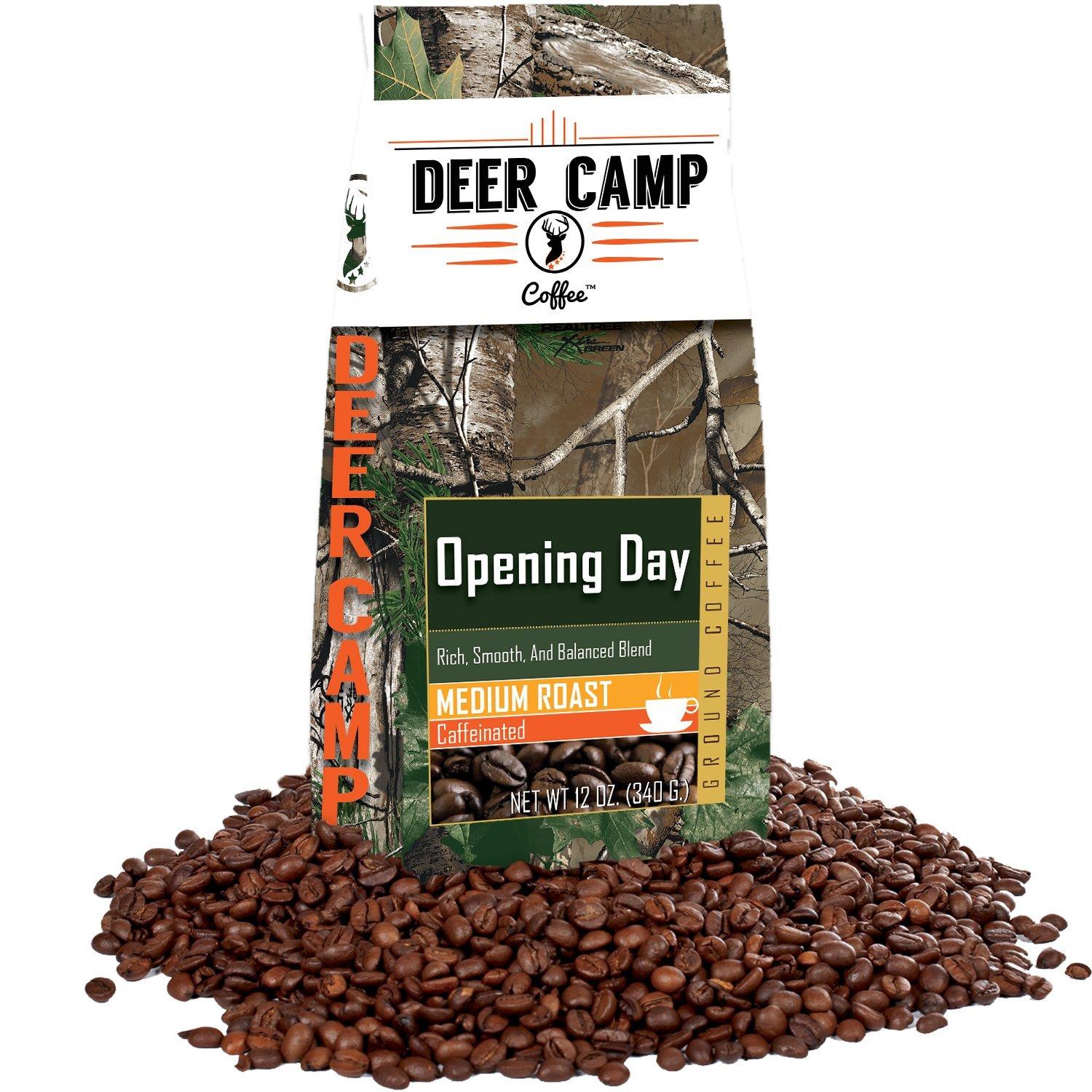Vacation Days Are Precious, So Use Them Wisely
If you're anything like me, time seems to always be in short supply. With a full-time job, a family and everything in-between, finding time to spend in the whitetail woods each fall can be a challenge. But when that week finally arrives — a whole seven days — our intention is to make the most of every second, and ultimately come home with many whitetail encounters, backstraps for the freezer and some bone for the wall.
However, in our zest to take in every ounce of the hunt, oftentimes we are too aggressive and have an all or nothing mindset to our week of whitetail wonder. Although this approach sometimes has its rewards, oftentimes the deer figure out pretty quickly they are not the only ones in the woods and become almost invisible. Our once highly prized week that we've had X'd-out on our calendar for months now falls short of our expectations.
If you want to get the most out of your week when you head to the woods this fall, step back and take the whole week into perspective. If you look at every aspect of the hunt and plan each step, you might just have the week of whitetail hunting nirvana you've been dying for.
The Perfect Week
Picking the perfect week is a must when you're looking to increase your odds at punching your tag, and it goes without saying the first or second weeks of November are prime. It's then that lust-crazed bucks are on their feet most of the day and throw caution into the wind and make mistakes in their search for love.
However, if you work with other hunters, getting a chunk of time off could be difficult. If I had to choose a backup week, it would definitely be during the early season, which can be as early as August or September in some states. That time of year can also yield opportunities at giant bucks. Although you won't find bucks dogging does then, they are usually easy to pattern, travel in bachelor groups and haven't felt the pressure of other hunters yet. If you take the time to find where the bucks are feeding and can figure out their travel route, sticking one of them with a well-placed arrow is almost a sure thing.
Before You Get There
Scouting is a huge key to your week in the woods, especially if this is your first time hunting a particular piece of ground. And with gas prices at all-time highs, and our old trucks barely getting 15 miles a gallon, pre-season scouting can be tough. So in order for us to have a good idea of what the patch of ground we're hunting has to offer, a little bit of research is a must.
Deer Camp Coffee® Packaged in Realtree Xtra Green Camo
For instance, I drew a tag for southern Iowa this fall, and I have decided to hunt a patch of public ground. After talking with the local conservation officer and hunters who have hunted there in the past, getting my hands on some maps, and checking the area out with online aerial photos, I have some good starting points. This by no means should take away from old fashion boots on the ground scouting, and I will definitely have to do some looking around once I get there in November, but I already have a few stand locations in mind. All I'll have to do when I get there is fine tune the information and I'll be off and running.
Fools Rush In
Well, the week has finally arrived and you're ready to get into your stand. Before you jump into what you think will be your best setup, you might want to plan each day of the hunt. Consider hunting an outside-in approach before you rush in. This is especially true if you're in a new area, but this principle is also usable if it's a property you've hunted several times in the past. Things can change in and around a property from year to year when you consider crop rotations, logging and in some cases urban sprawl, all of which can change deer movement. So starting on the fringe of your hunting area can be a good approach. Hang that first stand in a low impact area that will give you the ability to watch and learn, but also the opportunity to kill a buck.
I have hunted a small piece of property in Kansas for years, and one that I know very well. One of the first stands I sit is usually an isolated row of trees that is between a crop and a CRP field. It is by no means the best spot on the place, but it lets me come and go without being detected, and allows me to see a good chunk of the property. In fact, a couple of seasons ago I watched a buck enter at a corner of one of the fields, and a couple days later I hung a stand there and ended up sending an arrow through him.
Once you have a good idea of what the deer are up to, it's time to go deeper into the cover and start looking for funnels that lead from bedding-to-bedding and bedding-to-feeding areas. Bucks will be filtering through these areas as the rut begins to kick in. At this point however, it's still early in the hunt so don't set up too close to the best bedding areas unless you can come and go undetected. Spooking deer now can really be a damper on your hunt. Some good setups for this would be creeks, ridges, inside corners, saddles and pinch-points of timber.
Another area to consider for evening hunts is a staging area. These areas are typically close to food sources, so find the best food the area has to offer. Mature bucks will hang in these areas waiting on the sun to sink before going out to feed, especially in high pressure areas. Oftentimes these areas will be littered with rubs and scrapes.
Once you hit the latter part of the week, it's time to put conservatism aside and get in the thick of things. Although spooking deer should always be a consideration, start hunting the edges of the best bedding areas. During the rut, bucks will visit these areas throughout the day. However, your stand must be on the downwind side. And if you have not hung your stand yet, you might have to do it at night when the deer are gone or on a windy day. Once you decide to hunt bedding areas, you need to be there all day. Trying to sneak in and out while they are there can ruin the area the rest of the week.
I did just that the second to last day of a recent Wyoming deer hunt. Although I had been covered up with deer all week, no shooter bucks ever presented a shot. So with time running out, I set up a stand that was within a stone's throw of a bedding area and was in a staging area. Later that evening I had a mature buck wonder under my stand that proudly wore my tag when I headed home the following morning.
On the last day or two of your hunt a no holds bar mindset is necessary. Hunt the best areas you have found and plan on hunting all day. These are spots you have been avoiding early in the week because you know you will bump deer trying to get into them. However, if you keep the wind right while you're hunting, bumping a few deer as you come and go at this point will not take you out of the game.
Making the Most of It
To get the most out of your week and come home with some head bone for the record books, the key to success is avoiding mistakes. The mistake hunters make most often is deer knowing they are being hunted early in the week. Having good scent management before you leave your truck is a given, but it doesn't matter how scent free you think you are, never hunt a stand with a marginal wind. I don't know how many times I've had a wise ol' doe give that all too familiar warning blow and not had a deer come close to me the rest of the day. Also, a good entrance and exit strategy to your stands is a must, and be sure to have multiple stands up and ready to go. Burning a productive spot out early can make for a long week.
Andes Realtree Camo Sunglasses by Native Eyewear™
Furthermore, hunt all day if you're hunting in November; this is the week you have been waiting for. Although you are burning vacation time to be there, and hunting all day at times is no vacation, it will definitely increase your odds of taking that happy-hunter picture by the end of the week.
Finding quality bucks in only a week can be hard enough, but having equipment failure along the way can turn that week of vacation into a disaster. Shoot a good quality bow or gun, use good optics, top notch treestands and ground blinds, and dawn on your best set of Realtree camo. Sometimes there is nothing you can do about equipment failure, but using quality gear minimizes the chance of a mishap.
Finally, make the shot. You don't want to spend hours and hours in the stand and finally have that toad you've been after under you and miss. Prepare for that shot both physically and mentally, and practice. Be in good physical condition. If you can't walk a couple of hundred yards in hilly country without keeling over, your chances of killing a mature buck are slim. Also, know your weapon intimately. Start a shooting regiment now. I don't know how many times I've heard of hunters — me included — missing deer at 10 yards. They are solid at 20, 30 and even 40 yards, but overlooked those close opportunities that sometimes presented themselves, so be sure and hit the 10-ring.
When it's all said and done, it's your week in the woods, and making the most of it is what will ultimately lead you to success this fall. So start slow and finish strong and see if that puts a smile on your face at the end of the week.
Click here for more deer hunting articles and videos.
Check us out on Facebook.









